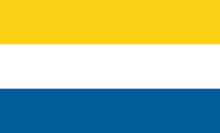tornionlaaksolaiset (Meänkieli) | |
|---|---|
 Flag of the Torne Valley | |
| Regions with significant populations | |
| 30,000–150,000 (est.)[1] | |
| Languages | |
| Meänkieli and Swedish | |
| Religion | |
| Lutheranism (Laestadianism) | |
| Related ethnic groups | |
| Finns (especially Kvens) | |
The Tornedalians are descendants of Finns who, at some point, settled to the areas of today's Northern Sweden near the Torne Valley district and west from there. Tornedalians are a recognized national minority in Sweden.[2]
YouTube Encyclopedic
-
1/3Views:81 5161 441456
-
History of Scandinavians | İskandinav Tarihi
-
Unveiling FINLAND's Global Impact: How it Shapes the World
-
Finns
Transcription
History
Tornedalians descend from Finnish peasants who arrived from today's western and eastern Finland. Settlements began during the Middle Ages around the northern end of the Gulf of Bothnia and along the river valleys nearby (Kalix River, Torne river, and Kemijoki River). Following the Treaty of Fredrikshamn the Finnish-speaking communities on the west side of the Torne river were split off from the rest of the population in what became the Grand Duchy of Finland, in the long term also causing a divergence of language.[3]
Tornedalians were the targets of extensive so-called "racial biology" and swedification policies. In the early-to-mid 1900s Herman Lundborg and others from the State Institute for Racial Biology performed skull measurements on Tornedalians, with Lundborg performing the first measurements in 1913. At the same time speaking Finnish in schools was banned in parts of the country, including the Torne Valley.[3] This ban was only revoked by the Riksdag in 1957.[4]
In 2000 a new law went into effect recognising the Tornedalians as an official national minority and Meänkieli as an official minority language. A truth and reconciliation commission on historical discrimination against the population was appointed in 2020, and made their final report on May 15, 2023.[4]
Population
Sweden does not distinguish minority groups in population censuses, but the number of people who identify themselves as Tornedalians is usually estimated to be between 30,000 and 150,000. Estimates are complicated by the fact that the remote and sparsely-populated Tornedalen area has been particularly struck by the twentieth century urbanization and unemployment. In 2006, a large radio survey about Finnish/Meänkieli speakers was conducted in Sweden. The result was that 469,000 individuals in Sweden claim to understand/speak Finnish or/and Meänkieli. Those who can speak/understand Meänkieli is estimated to be 150,000–175,000.
Literature
Bengt Pohjanen is a Tornedalian author who has written the first novel in Meänkieli, the language of the Meänmaa.[5] He has written dramas, screenplays, songs and opera. He is trilingual in his writing.
The novel Populärmusik från Vittula (Popular Music from Vittula) (2000) by Tornedalian author Mikael Niemi became very popular both in Sweden and in Finland. The novel is composed of colourful stories of everyday life in the Tornedalian town of Pajala. The novel has been adapted for several stage productions, and as a film in 2004.
Flag
The flag is a horizontal tricolor of yellow, white and blue.
See also
References
- ^ Russian Census 2010: Population by ethnicity (in Russian)
- ^ Council of Europe: Secretariat of the Framework Convention for the Protection of National Minorities, Fourth Report submitted by Sweden pursuant to Article 25, paragraph 2 of the Framework Convention for the Protection of National Minorities, 1 June 2014, ACFC/SR/IV(2016)004 , available at: https://www.refworld.org/docid/58346ed64.html [accessed 31 December 2023], p. 3
- ^ a b "Den tornedalska minoritetens historia tar form". minoritet.se (in Swedish). Sámi Parliament of Sweden. 2021-01-31. Retrieved 2023-08-01.
- ^ a b Langseth, Anna (2022-05-21). "Lång historia av statliga övergrepp mot tornedalingarna". Syre (in Swedish). Retrieved 2023-08-01.
- ^ "Meänkieli elämänsä kiikkulaudalla". Kaleva (in Finnish). Retrieved 2021-07-29.
